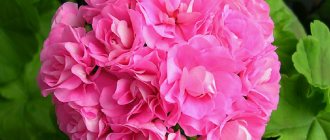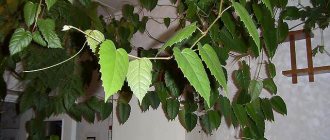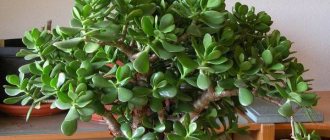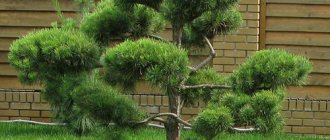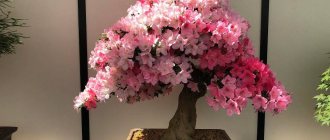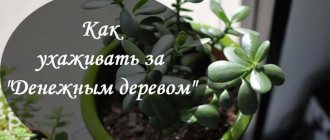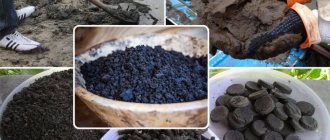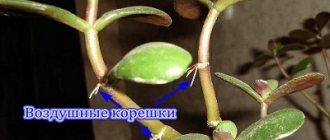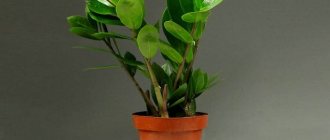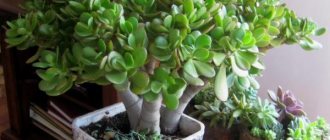Bauhinia, or, as it is often called, the orchid tree, can rarely be found on the shelves of our flower shops. The fact is that many novice flower growers think that this exotic plant is difficult to grow indoors, so the flower is not in particular demand. But that's not true. In fact, the orchid tree is quite unpretentious, and if you follow certain rules of care at home, described in our article, anyone, even the most inexperienced gardener, can grow a healthy and beautiful tree.
Description of the plant
Although Bauhinia is called an orchid tree, there is no relationship between the two crops. They are united with orchids only by the similarity of flowers. The plant genus belongs to the legume family. Under natural conditions, the orchid tree grows mainly in the humid forests of southeastern China, Sri Lanka, Vietnam and India, but some species are found in Africa and South America. In nature it grows from 6 to 10 meters, and is found in the form of trees, shrubs and vines.
Bauhinia received its name from the French botanist Charles Plumier in honor of the Swiss scientists brothers Caspar and Johann Baugin.
At home, Bauhinia is a small tree up to one and a half meters in height with light or reddish-brown bark. Most species have double, two-lobed leaves, up to 12 cm across. They have a dark green color with a silvery tint. On particularly hot days, the leaf blade can be folded in half along the central vein, thereby saving moisture.
The orchid tree is valued for its elegant flowers, which reach 15 cm in diameter. The color of flowers can be very diverse, depending on the variety: yellowish, pink, peach, crimson. Each individual flower does not live long, from a day to a week, but new ones are constantly blooming. Due to this, the flowering period of bauhinia is quite long - in some species from April to September-October. The buds are collected in inflorescences of 2-4 pieces.
Fruits appear in place of fallen flowers. These are brown oblong pods that resemble bean or pea pods. Inside are seeds shaped like beans. The pod cracks when fully ripe.
Important! Unlike peas and beans, the fruits of the orchid tree are poisonous. Under no circumstances should they be eaten.
Seasonal conditions (table)
| Season | Temperature | Lighting | Humidity |
| Spring | The orchid tree is a tropical plant. Summer prefers to be sunny and warm, with an average temperature of about 25°C. Otherwise, a large number of empty, unopened buds are formed and the plant slows down in growth. Can withstand short-term temperature changes. | Can grow in partial shade. But bright light is still preferable. It is good to keep the plant in the fresh air. But before taking it outside, bauhinia should be gradually accustomed to sunlight. If the plant spends the summer on a south-facing window, then it must be shaded. | It treats natural air humidity calmly. There is almost no need for additional moistening and spraying, with the exception of the heating season. But you shouldn't get carried away. Never spray buds and flowers, as this will quickly wither them. |
| Summer | |||
| Autumn | Winter maintenance involves lowering the temperature to 12 – 15°C. When bauhinia loses its leaves, it can withstand short-term frosts down to -5°C. | In winter they are kept in a well-lit place. You can even place it on the sunniest window or turn on additional lighting. | |
| Winter |
Bonsai tree: 5 main types and rules of care
Bauhinia loves bright light
Types and varieties
The genus contains more than 340 species, but not all of them are flowering. Many of them are suitable for growing at home. We will tell you about the most popular ones.
Thyroid (Corymbosa)
It blooms with small fragrant light lavender flowers, along the entire length of which pink-violet veins protrude. Blooms from spring to autumn. The heart-shaped leaves are attached to the stem with two-centimeter petioles.
Purple (Purpurea)
Bauhinia purpurea is the most common species cultivated at home. The tree has a crown in the shape of an almost perfect ball, with lush greenish-gray foliage, and slightly drooping shoots. It blooms with large (up to 10 cm in diameter) purple flowers from September to October. It was this type of Bauhinia that first received the name “Orchid Tree”, which then took root with all types of Bauhinia. It has a large (up to 25 cm) fruit.
Felt (Tomentosa)
Bauhinia tomentosa is a shrub with bifurcated light green leaves with dark veins. Thin branches bend downward under the weight of flowers and fruits. Large flowers are painted yellow. There is a dark burgundy speck inside the flower. The lifespan of one flower is no more than a day. Blooms from spring to late summer. The fruits are initially green but turn brown with age.
Pointed or Malaysian (Acuminate)
Bush up to 1.5 m tall. It blooms with snow-white flowers up to 10 cm in diameter. The flowering period is from mid-spring to early autumn, but each flower fades within a day.
Variegata
Bauhinia variegated is a chameleon among plants. The color of its flowers depends on the place of growth. Often, it can be confused with purple due to its hue. But unlike purple, here the leaves are arranged with a large overlap. In addition, the variegated bauhinia has 5-6 stamens, while the purple one has only 3-4.
Lonely or Single Stamen (Monandra)
Quite a rare decorative species.
It has large leaves, under the weight of which the branches bend to the ground. Flowers are collected in inflorescences with a brush. It differs in that all petals except one are painted white with pink dots, and one, the top one, is covered with bright red strokes on a yellow background. Over the course of a day, the petals change color from snow-white to pale pink. This may be interesting: Caring for an indoor rose from A to Z
Features of flowering
Period
Basically, all types of bauhinia bloom from spring to autumn, some varieties continue to delight gardeners with their flowers in the autumn.
To make the flowers larger, the plant should be kept in partial shade, but the number of flowers on the plant will be reduced.
For brighter flowering, do not neglect the use of nutrient mixtures rich in phosphorus and potassium.
The necessary conditions
In order for Bauhinia to bloom, all conditions must be strictly observed.
If the plant is located in a place where it receives direct sunlight most of the day, this will affect the size of the flowers - they will become smaller, but their number will not decrease.
Caring for an orchid tree at home
Bauhinia is not particularly whimsical. The main problem when growing this tree is often its size. Therefore, before purchasing, plan in advance where you will place the bauhinia pot. The remaining rules of care are not complicated, and we will describe them now.
Location and lighting
The orchid tree loves bright light. Rooms with windows facing south, southeast, southwest are suitable for growing it. The plant can survive in the shade, but in this case you will not get abundant flowering from it. In the summer, it is advisable to shade bauhinia located near southern windows. In the warm season, it is recommended to take the pot with the plant out into the fresh air.
In winter, it is recommended to move the plant to the sunniest place, and, if necessary, turn on additional lighting. An orchid tree requires 10-12 hours of daylight. But at the same time the place should be cool, so a glazed loggia is perfect. If there is no such place, place the pot with the tree as close as possible to a cold window, covering the heating devices with blankets or towels. After the winter dormant period, you cannot immediately place bauhinia in the bright sun - you should accustom it gradually.
Temperature
Since Bauhinia is a tropical plant, it loves temperatures not lower than 22-25 °C. It tolerates temperature changes well, but if exposed to low temperatures for a long time, many empty buds may form and the plant will stop growing. During the rest period, the temperature is reduced to 12-15 °C. An orchid tree can withstand even short-term frosts down to -5 °C, but it is better not to abuse this.
Humidity and watering
The orchid tree does not require high humidity, so it does not need bathing or spraying. The exception is the heating season, when heaters and radiators dry out the surrounding air, and the intense summer heat. When spraying the plant in summer, make sure that water does not get on the flowers and buds. It is recommended to wipe the bauhinia leaves with a damp sponge to remove dust once a week.
Bauhinia should be watered rarely (once every 4-7 days), but abundantly. The frequency of watering depends on the climate, so make sure that between procedures the soil in the pot has time to dry to a depth of 2/3 of the pot. This rule also applies to the autumn-winter period. In autumn, watering will be reduced due to lower temperatures, and in winter, after the start of the heating season, everything will depend on where your specimen is located. If you were able to find a cool place for it to winter, then one watering every 15-20 days will be enough (just make sure that the earthen ball does not dry out completely). If there is no such place in your home, you will have to water the flower more often.
It is better to take rain or melt water for irrigation, but settled, filtered or boiled water at room temperature is suitable. To maintain the acidity of the soil, with every third watering we recommend adding a few granules of citric acid or a couple of drops of apple cider vinegar to the water.
Feeding
At the beginning of spring, bauhinia needs nitrogen-containing fertilizers for active growth and expansion of green mass. Moreover, both fertilizers for indoor plants and garden ones are suitable (urea, ammonium sulfate, ammonium nitrate). Fertilizers should be applied once every 3-4 weeks. In May, they stop adding nitrogen, otherwise the plant will devote all its energy to forming a crown, which will affect flowering. From May to July, the orchid tree is fed with complex fertilizers containing phosphorus and potassium. At the end of summer, all feeding is stopped until the next season.
Care tips during flowering
The flowering period, its abundance and decorativeness directly depend on the type of bauhinia. But there are still some rules common to all types.
- If you grow bauhinia in partial shade, the flowering will be less abundant, but the flowers themselves will grow larger. If it is in the sun, there will be more flowers, but they will be smaller.
- Faded and dried flowers should be cut off.
- Make sure that the plant is not in a draft.
Pruning and crown formation
Pruning is one of the most important procedures for bauhinia grown at home. It is best done in the spring, so pruning is often combined with replanting. The first time pruning is carried out when the young tree is 2-3 years old. It is shortened to the height at which they want to see new shoots appear. Then, every spring, the shoots are pinched onto the top 2-3 leaves. But make sure to remove no more than a quarter of the green mass at a time. The cut areas should be treated with crushed activated carbon.
Many specimens of the orchid tree, mostly large-leaved, do not want to branch at all until they are pruned.
Some types of Bauhinia are excellent for growing bonsai.
Transplantation, pot and soil
The orchid tree requires annual replanting in early spring, after a dormant period. The pot should be 1-2 cm larger than the previous one, and be sure to have drainage holes. It should be stable, shaped like a bucket. Place 4-5 cm of expanded clay or small pebbles on the bottom.
For adult specimens that have become large trees and which are physically impossible to replant, the top layer of mail in the pot (7-10 cm) is changed.
Bauhinia is not picky about the soil, the main thing is that the soil is loose and soft for good moisture conductivity. Therefore, purchased soil for ornamental flowering plants is suitable. You can prepare the substrate yourself by mixing the following ingredients:
- leaf soil - 2 hours;
- humus or rotted compost - 2 hours;
- fertile turf - 2 hours;
- perlite or coarse river sand - 1 tsp.
This may be interesting: Ruellia - home care
Step-by-step transplant process
- Prepare a new pot, larger than the previous one. Place drainage at the bottom and add substrate.
- Half an hour before transplanting, water the plant thoroughly.
- Remove the bauhinia from the old pot, try to keep the earthen ball intact. If you suspect that the roots may have rotted, carefully shake off the soil from the roots. Carefully inspect the roots. Remove rotten and damaged areas of the root with a sharp tool, and dip the roots in a weak solution of manganese or epin for 2-3 hours. Then sprinkle the cut areas with crushed activated carbon.
Planting and growing
Planting a bauhinia orchid tree at home from seeds is not difficult. One of the advantages of the plant is its 100% germination rate. The gardener who will be planting must prepare the soil, pot, water and the seeds themselves.
Many people are interested in what time is best for landing. As with most plants, the best period will be spring, namely early May. Bauhinia loves long daylight hours and warm weather so that the direct rays of the sun fall directly on it.
Where is the best place to place the plant? Place the planted seeds on windows located in the south or southeast of the room. Always remember that Bauhinia is a tropical representative of the flora and loves to bask in the sun. However, during the first period of life of young shoots, you should protect them from direct exposure to sunlight. It is also better to avoid drafts during the growth period.
Bauhinia must be placed in a stable pot. A ceramic pot is an ideal option. In such a pot the plant will feel best and will not fall under its own pressure. The plant needs a high pot because of its powerful rhizome system. Do not allow moisture to stagnate in the pot. Drainage holes at the bottom of the container will help you prevent this.
Since the plant is quite rare, its seeds can only be found in specialized stores. For planting, the seeds that ripen in the pods are used. Before removing the seeds, wrap the pod with gauze. The seeds are very saturated with moisture, and at the planting stage this can play a cruel joke, and they will rot in the ground. The gauze will absorb excess moisture in a couple of hours. An experienced gardener will pollinate very quickly using a cotton ball or brush for the cross method.
The process of planting bauhinia is no different from planting other seeds:
Each variety produces the first shoots after a different period of time, but, most often, after 4 days you can notice the bud. Particularly rare species germinate only at the beginning of the 6th week. As soon as the first shoots become noticeable, the plant begins to adapt to its habitat. Important note: seeds should be planted away from children and animals, as they are very poisonous!
Two representatives of this species exhibit medicinal properties - Bauhinia variegated and racemosus. In addition to growing indoors and performing a decorative function, plants in their homeland use it for other purposes. Young shoots, flowers and leaves are used as food substitutes for vegetables. Representatives that are distinguished by the presence of tree bark serve as the basis for the manufacture of fishing tackle and ropes. Textile products made from bauhinia are highly wear-resistant, durable and do not lose their properties even when in water. Due to its high strength, Bauhinia tree bark is used to make handles, sheaths and other decorative accessories. Some parts of plants are used for medicinal purposes. They contain a high concentration of amino acids and flavonoids. Bauhinia is used to treat skin diseases, diarrhea and even leprosy. The seeds serve as raw materials for making oils, and the leaves and bark are used in painting. Chewing gum is also made from the leaves.
Growing a bauhinia orchid tree from seeds at home requires creating conditions suitable for it. It is necessary to carry out special feeding and pruning processes. Special watering regimes and maintaining room temperatures also have a huge impact, as does lighting and humidity in the room.
Bauhinia needs to be watered abundantly, but always leave the top layer of soil dry. Young seedlings can die from dry soil, so keep a close eye on the soil moisture level. It is enough to add moisture once a week. Change watering intervals based on the weather outside the window.
Some people use the same watering method for bauhinia as for orchids - the submersion method. Thanks to it, drops of water do not fall on the flowers, which is very important. By the way, water for irrigation should be heated to room temperature. The best option would be rain or melt water. If it is not possible to use such a sample, opt for filtered or settled. Bauhinia is a lover of slightly acidic substrates, so every 3rd watering can be accompanied by the addition of citric acid or apple cider vinegar.
The fertilizing process also requires that you carry it out only during the period of active growth of the seedling. After planting the seed, it can be fed for the first time in a month. Fertilize only moist soil, otherwise the plant's roots will get burned. Choose fertilizers that contain a lot of nitrogen. During the flowering period, bauhinia is fertilized twice a month, with fertilizing rich in potassium and phosphorus. However, remember that in autumn and winter this indoor plant does not need feeding at all!
As for lighting, you need enough of it. This type of plant is light-loving. When the sun shines too brightly on the bauhinia's habitat in summer, it is brought into the shade. If the rest of the time the plant is not on a well-lit windowsill, its branches will stretch out and the shape of the flower will change. In winter, when there is not enough light in the room, the bauhinia orchid tree at home is provided with artificial lighting using a lamp. It is not possible to avoid the use of artificial lighting, since a 10-hour daylight hours is important for Bauhinia. In the spring, after a long break from the sun, it is necessary to gradually accustom the plant to it, since with a sudden transition it can get burned.
Since Bauhinia is a tropical plant, it will thrive in high humidity, but will also be quite resilient in drier climates. To maintain a comfortable level of humidity, wipe its leaves with a damp cloth or spray them in the summer. However, this only applies to leaves; you should not do this with buds. Excess moisture on the flowers of the plant accelerates the process of their withering.
This type of orchid tree is heat-loving. The optimal temperature for it should not exceed +25 degrees. If a sudden cold snap occurs, bauhinia will withstand it as long as the temperature does not drop below 15 degrees Celsius. Try to maintain this temperature regime in the winter season.
Even an inexperienced grower will not encounter any difficulties during the cultivation of bauhinia if he follows all these simple requirements. In the summer, you can take the flower pot out into the open air so that it does not encounter drafts. Do not be alarmed if in winter you see a plant suddenly begin to shed its leaves - this is a normal process for it. However, if their number exceeds the permissible limits, it is worth reviewing the conditions of its detention.
Natural, organic fertilizers also work effectively. The most “popular recipe” for one of these: mix fresh cow manure and water in proportions of 1:1.5. Types of fertilizers can be alternated. Feeding should be done no more than once a month.
During the transition period, from May to July, enrich the soil of the plant with fertilizers containing a lot of potassium and phosphorus. Specifically during this period, an excessive amount of nitrogen will lead to the fact that bauhinia will use all its energy to form leaves and a trunk, but it will not have enough energy to produce buds. You can opt for universal fertilizers for flowering indoor plants, but carefully study the composition. At the end of the summer period, all feeding stops, since the shoots are already formed and begin to become woody. Bauhinia carries out this process to make it easier to endure the winter period.
During the dormant period, the flower is placed in the brightest place in the room, but do not forget that it requires the necessary coolness. At this time, a glazed loggia will be an ideal habitat. The dormant period involves watering once every two weeks. If you are unable to maintain the temperature required for Bauhinia, you can cover the heating radiators with a blanket or cloth. Spraying of the plant is carried out in order to humidify the air, and it is watered more often than during its life in the cold.
Transplantation is one of the important processes of caring for bauhinia. When the tree is already mature, it needs to be replanted every spring. Every year, change the pot to one that is a couple of centimeters wider in diameter. It is better to select flower pots with drainage holes. If you are replanting, but there is no way to change the pot, cut the rhizome a couple of centimeters.
First, the pot is filled with a mixture of expanded clay and pebbles, and the top is “covered” with rotted compost. We place the plant on such a “pillow”. During transplantation, you can immediately fertilize bauhinia and carry out prevention against parasites, if any. It is better to water the tree an hour before transplanting. When you remove the plant from the pot, try not to damage the earthen ball. If there is a need to trim the roots, it is recommended to additionally lubricate them with chalk or activated carbon. Since quite often the roots of bauhinia rot due to those who like to water them abundantly, it is better to immediately check for rot and wash them. You can dip it in chamomile infusion afterwards to consolidate the effect. After carefully examining the plant and applying all the necessary measures, place it in a container with fresh substrate mixture and then water it. For the first week after transplantation, do not expose the flower to direct sunlight.
Propagating an orchid tree at home
Bauhinia can be propagated by seeds and cuttings. The simplest and most popular among gardeners is the seed propagation method. That's where we'll start.
Growing Bauhinia from Seeds
Bauhinia seeds can be purchased or obtained at home. Remember at the beginning of the article we talked about beans? But it should be noted that seeds can only be collected from cracked pods - only they are fully ripe. The age of the seeds does not affect their similarity. It is best to plant in early spring. To grow bauhinia from seeds, follow these instructions:
- Scarify each seed. For those who do not understand what this means, let us explain. Scarification of seeds is a partial violation of the integrity of the hard waterproof shell of seeds in order to facilitate their swelling and germination and increase the percentage of germination. To do this, rub the seeds with a nail file.
- Place the seeds in water for about a day. You can add a growth stimulant to the water, but this is not necessary.
- Fill each pot with a damp mixture of peat moss and perlite and place the seeds, pointed tip down, until they go in halfway. It is recommended to plant one seed per pot in order not to replant the young sprouts in the future and to protect their fragile roots from damage.
- Create mini-greenhouses using bags and place the pots in a bright place with a temperature of about +25 °C. Be sure to ventilate the greenhouse daily. As it dries, moisten the soil by spraying with a weak solution of a biostimulant (epin, zircon, succinic acid).
The seeds germinate quickly, the first shoots will appear within a week, and after 2 months their height can reach 20 cm. Around this time, we recommend pinching the top for better branching. Young specimens are gradually accustomed to sunlight.
Propagation by cuttings
At home, this method of propagation is rarely used, because cuttings take root rather poorly. But if you still want to try your luck, we will tell you how to propagate an orchid tree from cuttings.
- For propagation, semi-lignified cuttings obtained as a result of spring pruning of Bauhinia are used.
- Place the planting material in fresh air for 12 hours to dry. Sprinkle it with a growth stimulator in powder form.
- Plant the cuttings in a container with damp perlite or vermiculite, 2-3 cm deep. Cover the container with glass or a bag to create greenhouse conditions.
- Ventilate the greenhouse daily and moisten the soil with a biostimulator solution.
- Now comes the hard part. In the greenhouse it is necessary to maintain a constant temperature of about +30 °C, bottom heating and 12-14 hour daylight hours. And even then, most of the cuttings will rot.
- Transplant the surviving cuttings into separate pots with soil for adult bauhinias as soon as they produce their first leaves. For 2-3 months, shield the young plant from direct sunlight, and water it with a weak solution of potassium permanganate instead of ordinary water.
Reproduction
To obtain a new bauhinia plant, seeds or cuttings are used.
Growing from seeds looks like this:
- Only well-ripened seeds are collected, which spill out of cracked pods. To collect the seed, you can wrap one pod in gauze to prevent the contents from getting into the ground.
- In the spring, the seeds are soaked in water, and then the largest and most swollen specimens are selected and sown in a soil mixture (peat and perlite) to a depth of 5 mm. In this case, the crops are covered with polyethylene or glass to create greenhouse conditions.
- Every day you need to ventilate the crops and moisten them. In this case, you can even add additional illumination with a phytolamp.
- After about 4-6 weeks, seedlings appear and will need to be planted in prepared soil.
- When the shoots reach a height of 30 cm, the top is pinched so that the future bush begins to branch independently and form a crown.
Bauhinia grows best from seeds. Although the method of planting cuttings is quite popular. To do this, you will need to cut several cuttings from semi-lignified branches in the spring. It is recommended to treat the sections with a special root-forming stimulator (Kornevin), and then plant them in prepared soil (vermiculite) under a film.
Common care mistakes
Let us repeat that bauhinia is an unpretentious plant that will not die if its owner makes mistakes in care. But these errors will affect one or another life process of the plant and will not pass without a trace. The plant will let you know that something is wrong with it. Let's consider the reaction of an orchid tree to frequent mistakes in care.
- Bauhinia does not bloom. Perhaps you over-fed the plant with nitrogen-containing fertilizers, and it put all its energy into the foliage, sacrificing flowering. Perhaps you did not feed the plant enough with complex fertilizers. Remember how long ago you last replanted your tree - too infrequent replantings can affect flowering. A properly organized dormant period also has a great influence on flowering. Carefully read all the rules described in this article so that from now on your bauhinia will bloom magnificently and brightly.
- The leaves turn yellow, but the veins remain green. This happens when you water too much.
- The buds are falling. This usually occurs at low temperatures. If the temperature is fine, your specimen may have spent some time in a draft.
- The leaves are turning pale. This usually happens with young plants that are placed on the windowsill immediately after transplantation. We remind you that Bauhinia needs to be accustomed to light gradually.
- Yellow, beige or brown dry spots appear on the leaves. These are sunburns. It looks like your bush is spending too much time in direct sunlight. Curtain the window. And never expose the flower to direct sun immediately after spraying. Drops of water intensify sunlight, and the plant gets burned.
- The shoots have become thin and drooping, the leaves are too small and pale. Your orchid tree is not getting enough light. Move the pot to a sunnier room.
- The leaves fold during the day. It looks like your room is too hot and dry. Try to lower the temperature or move the flower to another room. Place a container of water next to the pot.
- The leaves are curling . Your Bauhinia is lacking potassium. When fertilizing, use fertilizers containing potassium. Follow the instructions on the package.
- The base of the trunk turns black, the plant smells of rot, and the soil becomes moldy. Your tree has root rot. This occurs due to a combination of the low temperature of the earthen coma and its high humidity. Most likely, you watered your bauhinia with cold water and did not allow the earthen coma to dry to the required depth. Below we will tell you how to treat the plant in this case.
This may be interesting: Crossandra - care and reproduction at home
How to plant and replant a plant correctly
Bauhinia is replanted annually, increasing the diameter of the pot by 1–2 cm. If for some reason this is not possible, remove the earthen ball and trim the roots by 2–3 cm. Fill the free space below with fresh substrate and return the plant to the container. For very large specimens, which are physically impossible to replant due to their size, the top 7–10 cm of soil is changed. The best time for the procedure is the beginning of spring.
Bauhinia is undemanding when it comes to soil quality. She will be quite happy with the standard substrate for flowering indoor plants. The soil is mixed independently from fertile turf, leaf soil, humus or rotted compost and perlite (2: 2: 2: 1). The latter can be replaced with coarse river sand.
Bauhinia feels good and develops in ordinary soil for flowering indoor plants
Since the plant is quite tall and massive, the container is chosen to be stable and shaped like a bucket. A prerequisite is the presence of drainage holes. A thick (4–5 cm) layer of expanded clay or small pebbles is poured onto the bottom. If the plant is quite large, this material can be mixed into the substrate itself. This will ensure better soil aeration, prevent water from stagnating and make the pot a little heavier.
The aerial part of an adult bauhinia is quite massive, so a container needs to be voluminous and stable.
Bauhinia is transplanted using the transshipment method:
Diseases
Bauhinia is often attacked by pests, and if there are mistakes in care, it can get sick. Of course, all this is not fatal and can be treated. But it is much easier to prevent the occurrence of a disease than to cure it later, so first of all we will talk about disease prevention measures.
- Keep newly purchased plants in quarantine for 20-30 days. Often pests and diseases are brought into your home from the store.
- Regularly inspect your flower collection with a magnifying glass, and immediately isolate any that look suspicious.
- Ventilate the room daily.
- Wipe off the dust from the leaves with a damp sponge at least once a week.
- When replanting, sterilize the pots and disinfect the soil.
Important rules have been clarified. Now let's talk about what to do if you were unable to protect your pet. Let's look at how to treat the most common diseases of the orchid tree: root rot and chlorosis.
Root rot
With root rot, the base of the trunk turns black, the tissues become soft, an unpleasant odor emanates from the plant, and mold appears on the soil in the pot. Remove the plant from the pot, shake off the earthen lump and carefully examine the roots. The disease can only be treated in the early stages, so if most of the roots have already rotted, the plant will have to be destroyed. If decay has just begun, follow these instructions:
- Cut off any rotten areas of root and shoots. Process the cuts.
- Place the roots in a 1% solution of Schor or Oksikhom for 2-3 hours.
- Repot the plant in a new pot. Use new soil and add Glyokladin to it.
- For the first 2-3 months, water the transplanted bush with a 0.5% solution of Alirin-B, Baikal-EM or Previkur.
Chlorosis
If the leaves of your bauhinia turn yellow but their veins remain green, if the leaves become smaller and their edges curl, if the buds fall off and the flowers become deformed, then your specimen has chlorosis. Your next steps are:
- Water the plant with acidified water instead of regular water. To do this, add a little citric acid or apple cider vinegar to the water.
- Once every 2-3 days, spray the plant with preparations containing iron chelate (for example Antichlorosis, Ferovit, Ferrylene). Do not forget that after spraying a wet plant should not be placed in the open sun.
- The next time you repot, bury a couple of rusty nails in the pot.
Bauhinia: diseases and disease prevention
It is also worth mentioning that the Bauhinia orchid tree, which grows at home and indoors, may suffer from a disease such as root rot. Also, sometimes it can be attacked by pests and insects, which do not mind feeding on the sap that is located in the green part of the plant. In general, it is easier to carry out preventive procedures and prevent diseases than to allow them to develop, because there are situations when the disease has been neglected, and the chances of recovery are reduced to almost zero. Therefore, in this case, it is worth paying attention to simple, almost elementary measures to carry out prevention to prevent the development of Bauhinia disease:
- new copies can be quarantined for a while, which will last for one month
- Houseplants should be regularly inspected for disease or damage from bacteria and insects.
- house and cut flowers should be spaced further apart to prevent the spread of Bauhinia disease
- the room in which the plant is located should be regularly ventilated, and dust should be removed from the leaf part, and such processing and cleaning should be done approximately once a week. In general, you should keep an eye on the cleanliness of the plant, since the dust may also contain bacteria or fungal spores, which can provoke certain diseases. The leaves can also be irradiated weekly using a quartz lamp, but this measure is already carried out if the gardener has such an opportunity and a special device - the lamp itself. In general, by following all these rules, you can achieve incredible results, and bauhinia will delight you with its appearance and flowering for a very long time.
Pests
Shchitovka
Brown or gray tubercles appear on the leaves. Gradually they increase in size, and the surface around them turns red or yellow. This is a scale insect. You should fight it like this:
- Lubricate the tubercles with vinegar, turpentine or kerosene, and remove the pests after 2-3 hours.
- Treat the plant with soapy water.
- After an hour, wash the bauhinia in the shower.
- At weekly intervals, spray the bush 2-3 times with Metaphos, Fosbecid or Fufanon.
Whitefly
You can spot the whitefly with the naked eye. These are small insects with white wings that fly off the flower every time you touch it.
- Hang fly tape near the whitefly-attacked plant.
- Turn on the fumigator and let it work for a couple of days.
- Spray the plant and soil every 5-7 days with Lepidocide, Iskra-Bio or Tanrek.
Spider mite
This pest cannot be confused with any other. If you notice a thin web on your bauhinia, then a spider mite has taken up residence on it. Try to get rid of it in the following way:
- Wipe the leaves of the plant with alcohol wipes, trying to remove any pests you see.
- Wash the plant well in the shower.
- Water the flower generously and tie a plastic bag tightly around it for 2-3 days.
- If, after removing the dome, remains of parasites are found under it, you will have to treat it with acaricides (Fitoverm, Neoron, Apollo). Follow the instructions on the packages. It is recommended to change medications.
Aphid
Aphids are small greenish or brown insects that cling to leaves and buds on the back side, as well as the tops of shoots.
- Eaten shoots and leaves will have to be cut off.
- Spray the plant with laundry soap foam.
- Wash the bush well in the shower.
- Every day, spray the flower and soil several times with a strong-smelling infusion (for example, onion, garlic).
- If there is no effect, start treating with store-bought drugs such as Inta-Vir, Fury, Biotlin, following the instructions.
Typical mistakes of an amateur gardener
Bauhinia is a hardy plant that can forgive the gardener many mistakes in care. But for a tree such errors do not go unnoticed; it noticeably loses its decorative value. The most obvious indication that something is wrong with the plant is the absence of flowering. But there are other alarming symptoms.
Table: how Bauhinia reacts to errors in care
Yellowing bauhinia leaves indicate improper watering.
